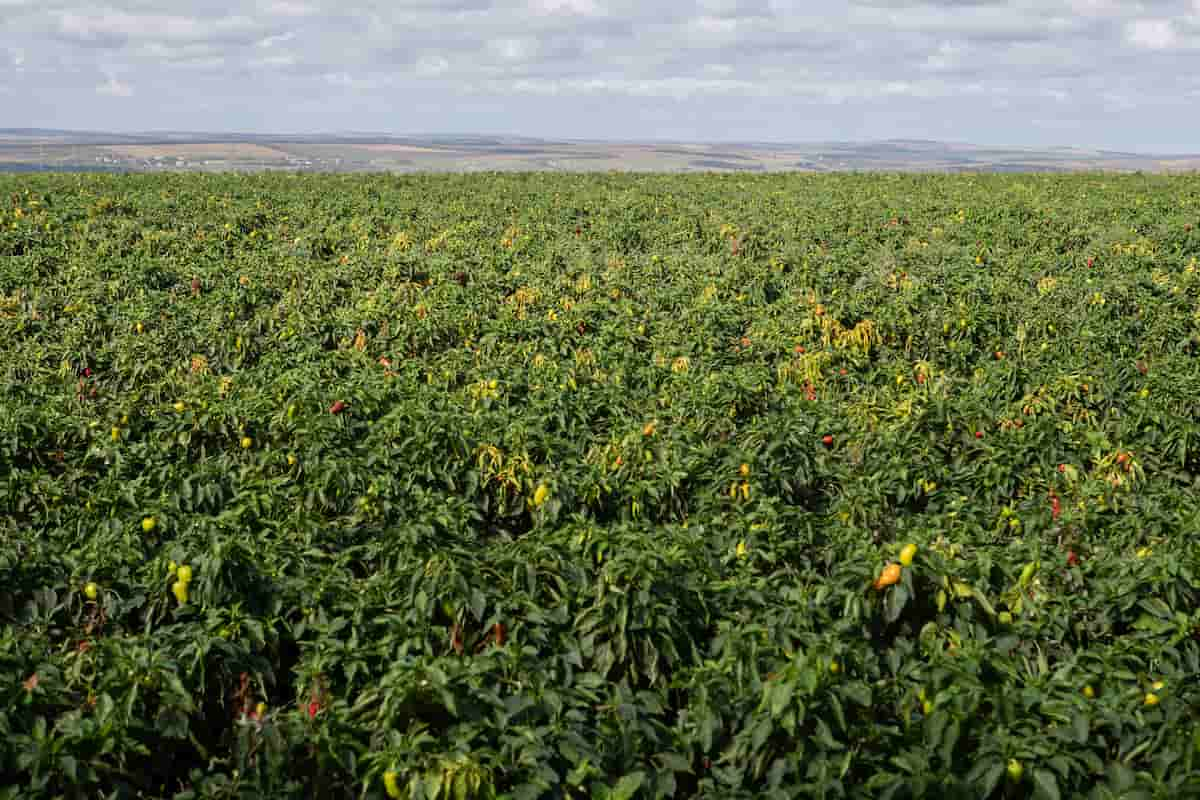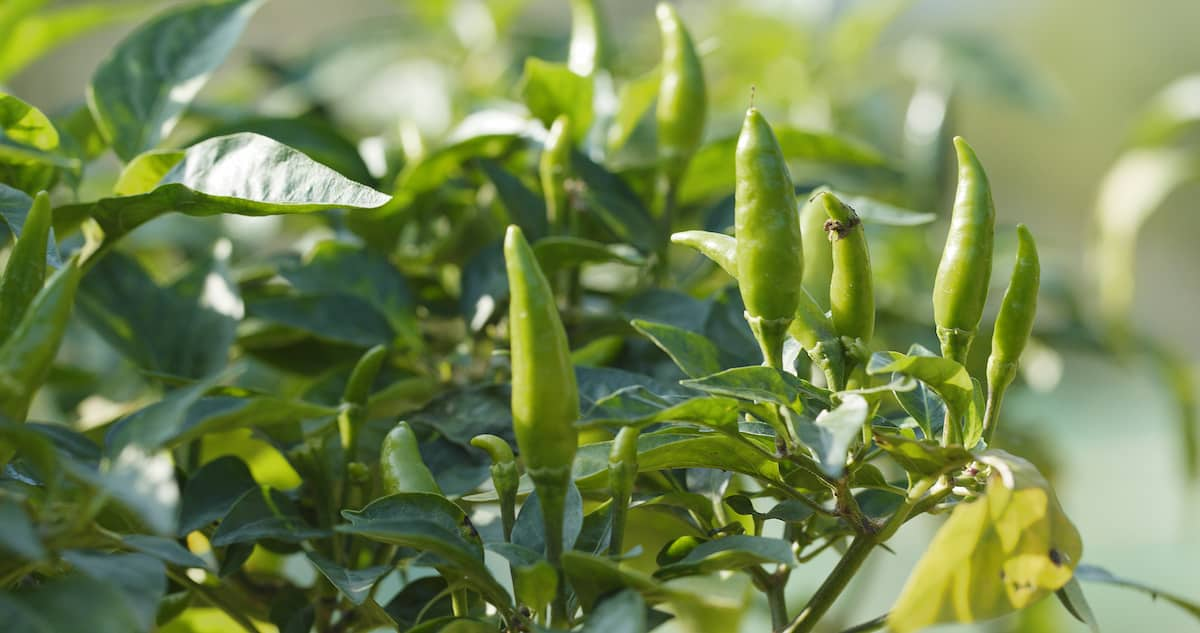If you are considering starting a Chili pepper farm in Texas, you are making a smart decision. Chili pepper farming can be profitable in the state due to its warm climate and excellent soil conditions. However, like any other crop, Chili peppers require proper care and attention to grow well and yield good results.

How to Start Chili Pepper Farming in Texas
Right Chili Pepper Variety
The first step in Chili pepper farming is choosing the appropriate variety for your area’s climate and soil conditions. Texas is known for its hot and dry weather, which makes it ideal for growing hot and spicy Chili peppers. Some of the popular Chili pepper varieties that grow well in Texas include:
- Jalapeno: This classic Mexican pepper is a staple in Texas cuisine. It is hot but not too spicy, making it ideal for salsas, dips, and other recipes.
- Habanero: This is one of the hottest Chili peppers in the world and is commonly used in Tex-Mex cuisine. It is bright orange and has a fruity flavor.
- Serrano: This is a small, thin pepper hotter than a jalapeno but not as hot as a habanero. It is commonly used in salsas and sauces.
- Poblano: This is a mild, dark green pepper commonly used in Mexican cuisine. It is great for stuffing and roasting.
Preparing the Soil
Once you have chosen the right Chili pepper variety, the next step is to prepare the soil for planting. Chili peppers require well-draining soil that is rich in nutrients. If your soil is too heavy or compacted, add organic matter, such as compost or manure, to improve its texture and fertility. Make sure to till the soil to a depth of at least 6 inches to ensure the Chili pepper roots have enough room to grow.
Planting
After preparing the soil, it is time to plant the Chili pepper seeds. You can start the seeds indoors or directly in the soil depending on your preference. If you start the seeds indoors, you must transplant them to the garden once they have sprouted and grown to a suitable size. If you plant the seeds directly in the soil, make sure to plant them at a depth of about 1/4 inch and about 18 inches apart to give them enough room to grow.
Caring
Once the Chili peppers are planted, it is essential to care for them properly to ensure that they grow well and produce a good yield.
- Watering: Chili peppers require regular watering to grow well, especially during the hot summer months in Texas. Water them deeply about once a week, making sure to avoid getting water on the leaves to prevent fungal diseases.
- Fertilizing: Chili peppers require regular fertilization to grow well and yield well. Fertilizers with equal amounts of nitrogen, phosphorous, and potassium can be utilized.
- Mulching: Mulching can help to retain moisture in the soil, suppress weeds, and keep the soil cool. You can use organic mulch such as straw or leaves to mulch around the Chili pepper plants.
- Pest and disease control: Chili peppers are susceptible to various pests and diseases, including aphids, spider mites, and fungal diseases like powdery mildew. You can control pests by spraying with water and dish soap or using insecticidal soap. To prevent fungal diseases, avoid getting water on the leaves and provide good air circulation around the plants.
In case you missed it: How to Grow Yellow Muskmelon from Seed: A Step-By-Step Guide

Harvesting
Chili peppers are ready to harvest when they reach their full size and color. The time it takes for Chili peppers to mature depends on the variety, but most peppers will ripen about 70 to 90 days after planting. When harvesting Chili peppers, use a sharp knife or scissors to cut the peppers off the plant, being careful not to damage the plant. It is best to harvest Chili peppers when they are fully ripe, as they will have the best flavor and nutritional value.
Marketing
Once you have harvested your Chili peppers, it is time to market them. You can sell them at local farmers’ markets or directly to restaurants and food vendors. It is important to price your Chili peppers competitively and ensure they are high quality to attract customers. You can also consider value-adding by making Chili pepper products such as hot sauce, dried peppers, or pickled peppers, which can be sold at a higher price.
In case you missed it: Seedless Watermelon Farming: A Step-By-Step Guide for Seed to Harvest

Conclusion
In conclusion, if done correctly, Chili pepper farming can be profitable in Texas. Choosing the right variety, preparing the soil, planting the seeds, caring for the plants, harvesting the peppers, and marketing them are all essential steps in starting a successful Chili pepper farm. With proper care and attention, you can grow healthy and flavorful Chili peppers that will be in demand among local consumers and food vendors.
- Feed Your Flock for Less: Top 10 Tips to Save on Chicken Feed
- Ultimate Guide to Ossabaw Island Hog: Breeding, Raising, Diet, and Care
- Hatching Answers: The Top 10 Reasons Your Chickens Aren’t Laying Eggs
- Eggs and Economics: Breaking Down the Cost of Raising Backyard Chickens
- Defend Your Greens: Proven Methods to Keep Iguanas Out of Your Garden
- Ultimate Guide to Cinnamon Queen Chicken: A Comprehensive Guide for Beginners
- Ultimate Guide to California Tan Chicken: Breeding, Raising, Diet, Egg-Production and Care
- Ultimate Guide to Marsh Daisy Chicken: Breeding, Raising, Diet, and Care
- 10 Types of Chicken Farming Businesses You Can Start for Profits